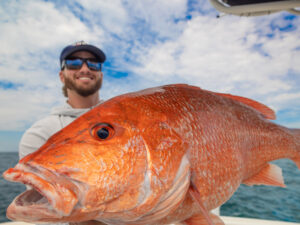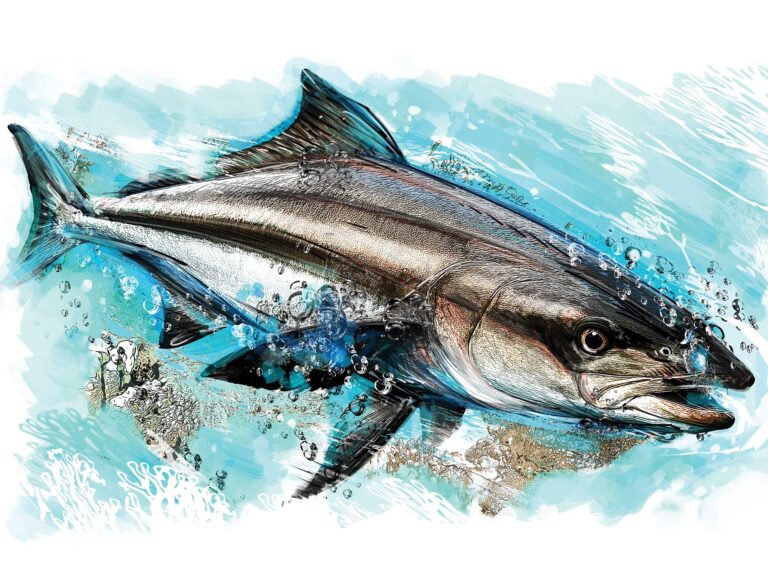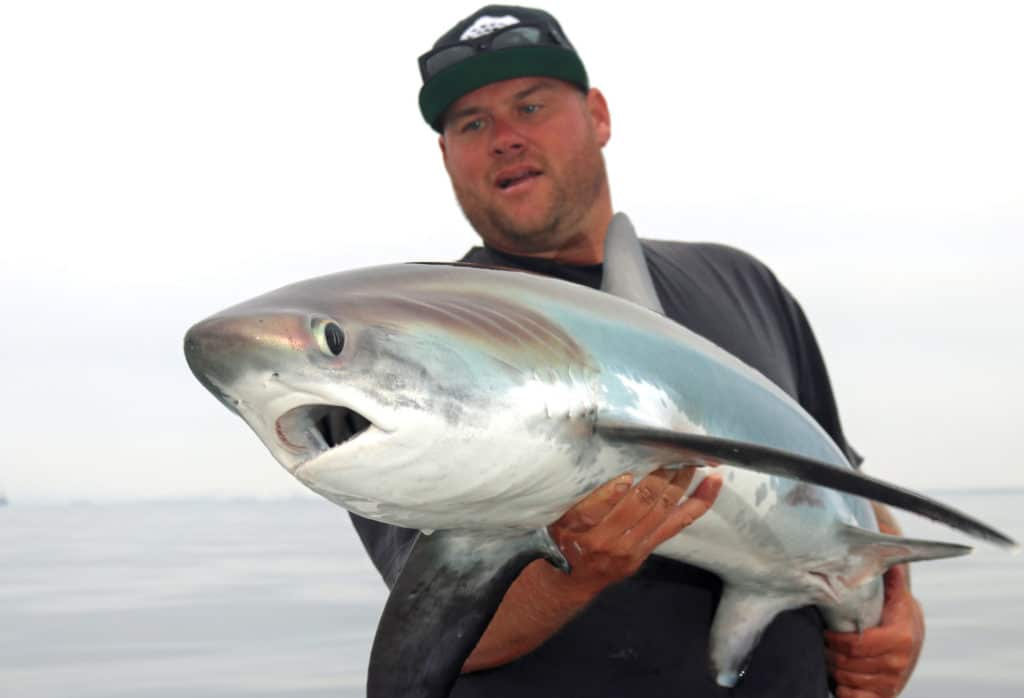
The nearshore waters off the coast of Southern California spring to life around mid-May as massive schools of bait fish swarm northward from Mexican waters. It’s a moveable feast stalked by gangs of predators, including voracious common thresher sharks weighing anywhere from 60 to 175 pounds.
As they grow, the maturing threshers tend to trickle offshore to live the balance of their lives as pelagic predators. But in the meantime, the smaller-grade fish hang close to shore, pile on the pounds and provide outstanding catch-and-release fishing on light tackle. They’re pure fun, displaying magnificent leaps, amazing strength, blinding speed and supreme agility, which allows these long-tailed sharks to change direction in a split second.
“I never imagined these fish would be so much fun,” said my friend Ron Ballanti, after we caught and release 12 threshers before noon one August day. “Let’s do this again soon.”
How to Hook Thresher Sharks
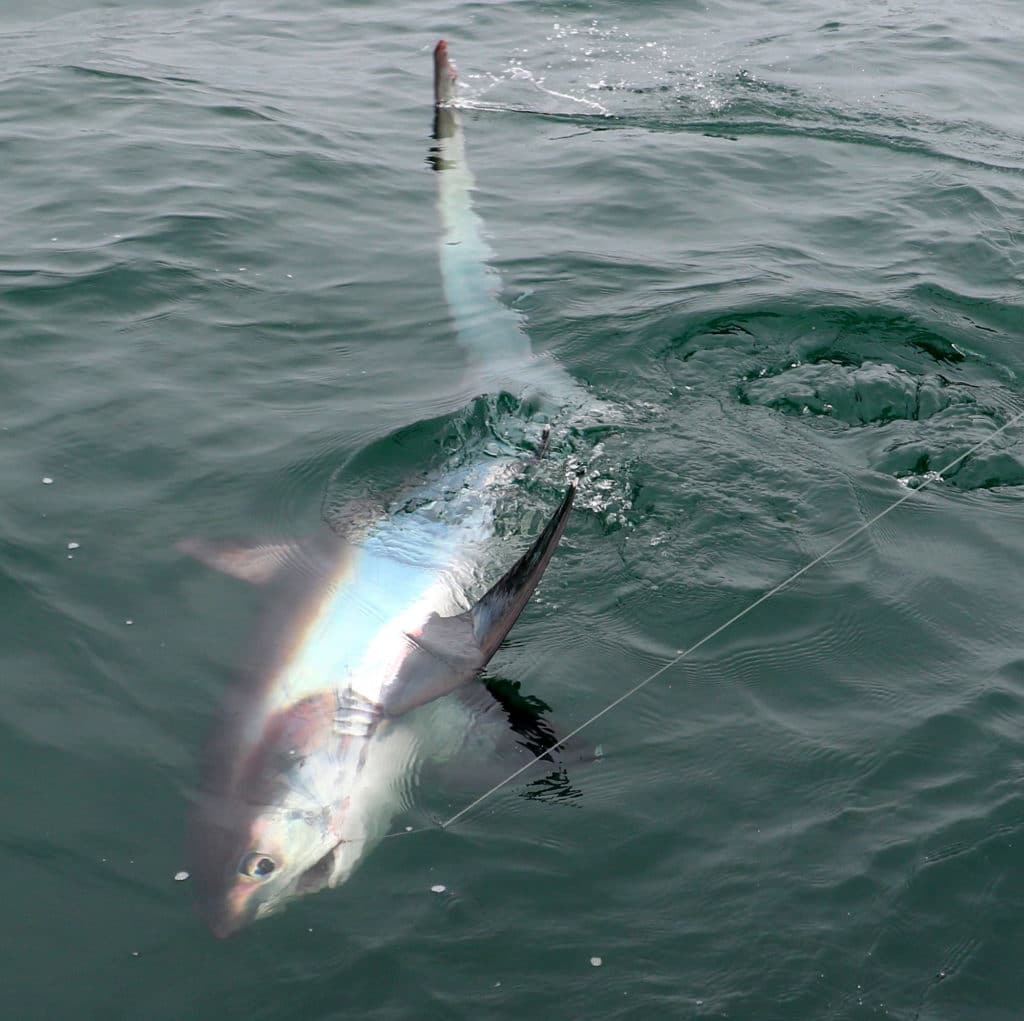
Indeed, we’re talking world-class light-tackle fishing, but there’s a caveat here. Threshers stage their spectacular fights only if they’re hooked in the mouth. Unfortunately, foul-hooking threshers commonly occurs because they use their long tails to stun potential prey, often becoming tail-hooked in the process. Some anglers take advantage of this by trolling deep-diving lures, which usually results in a foul-hooked fish — a technique known by the derogatory term snag-and-drag.
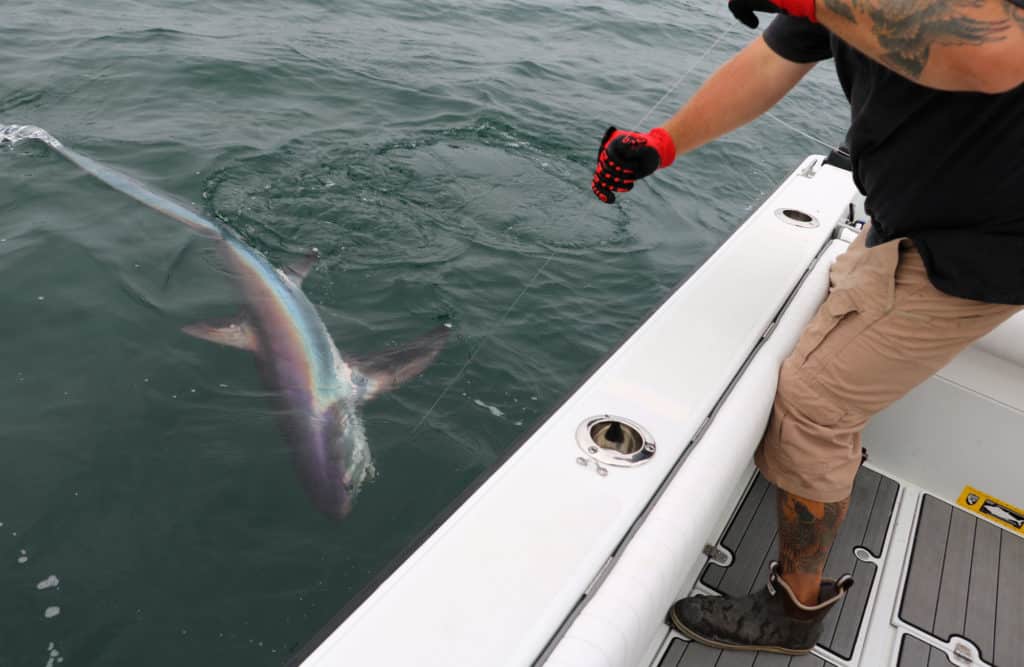
Use Circle Hooks for Thresher Sharks
The key to minimizing foul-hooked fish—and maximizing the sport—is drifting or slow-trolling live bait such as sardines or small Pacific mackerel, using circle hooks such as a 2/0 to 3/0 Owner Mutu Hybrids. Threshers tend to inhale small, isolated, slow-moving live baits, and the circle hook helps prevent foul-hooking, even if the shark swats at the bait with its tail.
Circle hooks also facilitate catch-and-release fishing and help prevent bite-offs. Threshers have relatively small teeth, so I forgo wire and opt for 130-pound-test fluorocarbon leaders. However, these fish can measure anywhere from 10 to 15 feet from the nose to the tip of the tail, and they sometimes roll up in the leader, so I use about 20 to 25 feet of fluoro leader material to prevent the fish from chafing through the leader and reaching main line with their sandpaper-like skin. I crimp on the hook. A wind-on leader gives you better control of an unpredictable fish when it gets close to the boat. A size-10 lever-drag reel spooled with 50- to 65-pound-test braided line proves more than sufficient for these fish, especially when matched with a 6-foot rod, sporting a medium to medium-light action.
Thresher Sharks are Active Predators

Threshers that gather nearshore in SoCal are active predators that focus on anchovies, grunion and sardines, often working in wolf-pack-like groups, corralling prey into tightly formed schools. Sometimes, they force the bait to the surface, indicated by telltale signs such as terns flittering just above the water. You might also see free-jumping threshers or the quick-slash of their tales as they cleave the bait schools. During quiet mornings on the water, I have even heard the subtle hiss as the tip of that deadly tail scarcely slices the water’s surface.
Threshers don’t seem to mind the green shade of nearshore waters. In my view, these younger fish might even prefer off-color water, which is often a reflection of the rich nutrients that attract forage species. Threshers also possess an affinity for inshore structure spots such as rockpiles, reefs and ledges. More than once I have trolled back and force over such structure and experienced a bite on each pass.
In terms of water depth, I have found threshers from the edge of the surf break out to about a mile off the beach in 50 feet of water. If you don’t see signs at the surface, use your sonar to look for densely packed bait schools deeper in the water column. You might also see the sonar returns of the sharks themselves shadowing the bait.
Fish the Entire Water Column
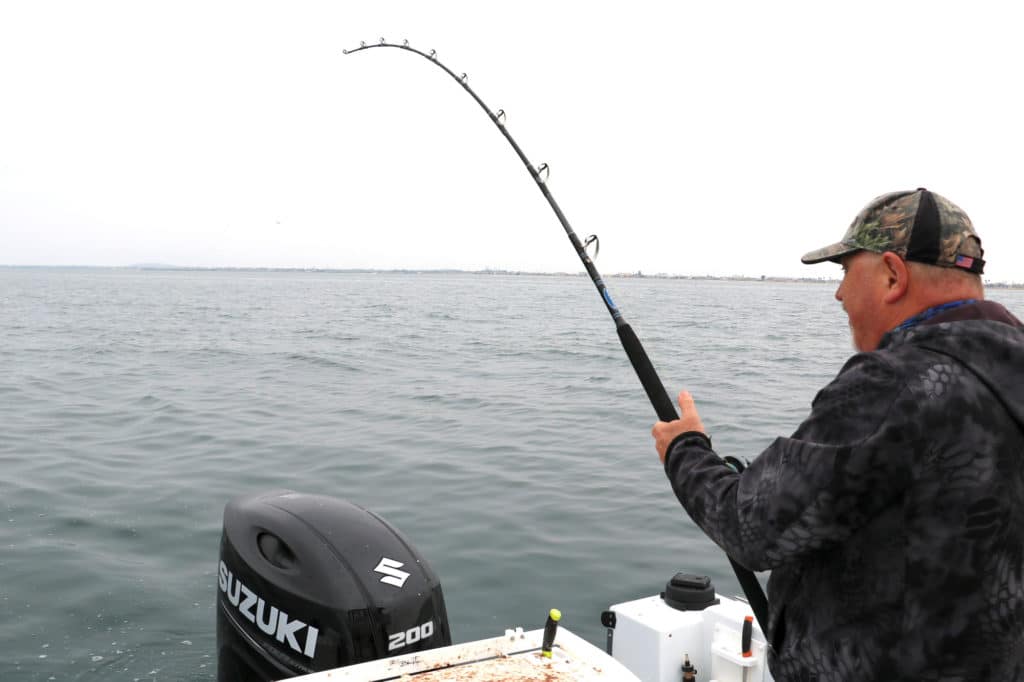
During a fast drift or while slow-trolling in the deeper waters, it pays to stagger lines high and low in the water column. I usually fish three lines, one with a 2-ounce egg sinker, another with an ounce and a third with no weight at all. I use small rubber bands to hold the sinkers in place. Sometimes the fish are feeding deep or in mid-depths, and this technique helps you find them.
Once you do, get ready for wild action as these speedy and high-flying sharks will keep you on your toes. And please practice catch and release, remembering that these fish, even the 150-pounders are still immature and have not yet had a chance to reproduce.

